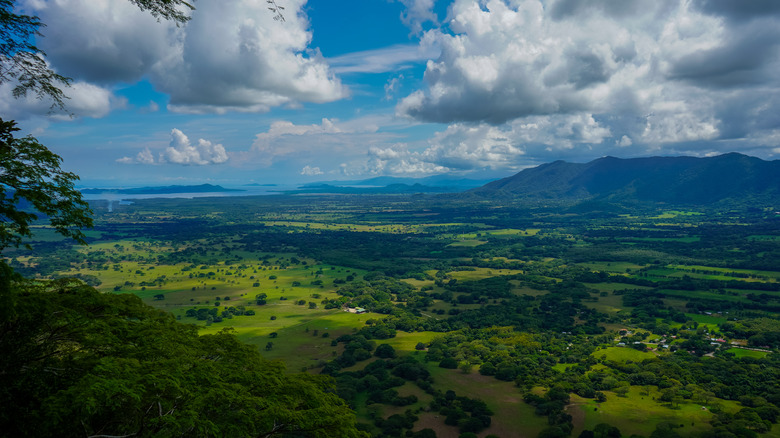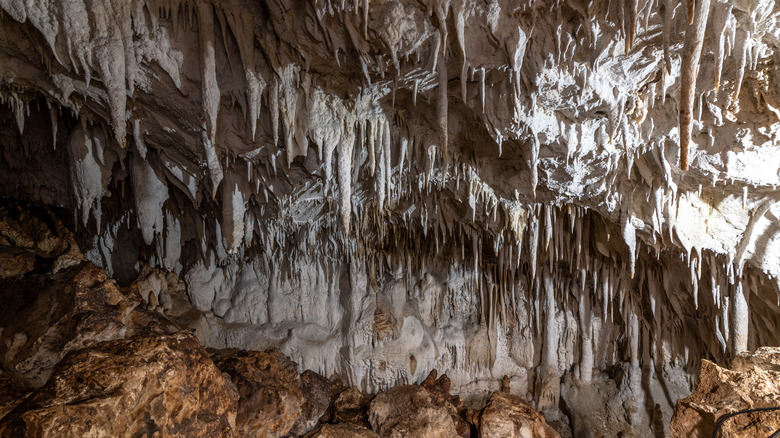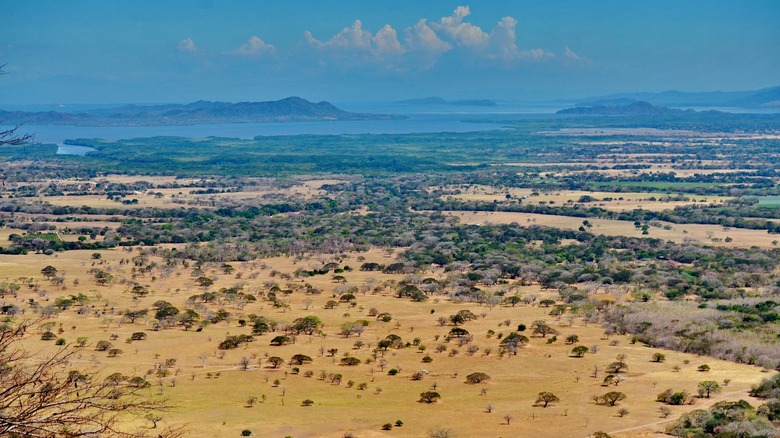This Underrated Costa Rica National Park Is As Stunning Underground As It Is Above Ground
Sandwiched between Caribbean waters and the Pacific Ocean, Central America is full of history, culture, and natural wonders. It also caters to all kinds of tourists. Whether you're a solo traveler wanting to explore the stunning, highly-rated destinations in the Caribbean or your family plans to island hop and just landed on Nicaragua's spectacular Corn Islands, you could easily find yourself exploring Costa Rica. When you do, you'll discover spectacular beaches, volcanoes, jungles, and cave systems.
Wait, caves? Yes. And they are amazing. The caverns at Barra Honda National Park are conveniently located not far from the most popular attractions on the Nicoya Peninsula in the province of Guanacaste. So, go ahead and check out the trendy, underrated beach town of Samara, or feed your inner thrill seeker with a visit to Montezuma Beach. Then rent a car, head to the ever-popular Nicoya, drive another 30 minutes to Barra Honda National Park, and take your vacation underground.
An underground adventure in Barra Honda National Park
Costa Rica is known for many things, but limestone caves aren't one of them. However, the Barra Honda National Park is home to 42 caverns, only 19 of which have been fully explored, a process which didn't begin until their discovery in the 1960s. Of those 19, only two are open to the public, and visitors must be accompanied by a local guide.
If you're looking for something a bit unique and unexpected on your trip to Costa Rica, spelunking is just what you need. In fact, this particular adventure incorporates hiking, rappelling down a ladder, and positioning yourself inside a cave. The primary attraction at Barra Honda is Terciopelo, a name derived after an enormous dead snake was found just inside during the first exploration. There is also a less challenging cave, known as La Cuevita, which is a family-friendly option.
To enter Terciopelo, you must first harness up and lower yourself down a 55-foot ladder to the floor below. From there, you'll go into a smaller opening to drop down to nearly 100 feet below the surface. Inside, you'll see stalagmites and stalactites that began their slow growth 70 million years ago. Today, the formations resemble popcorn, roses, grapes, and shark teeth. Although no animals now live in the caverns, excavations have found evidence of life dating back to 300 BC.
The above-ground delights of Barra Honda National Park
If cave exploration isn't your thing, you can still enjoy hiking the trails throughout the area. From the starting point to the opening of the caves, the hike covers about 2.5 miles along the forest. A guided tour will teach you about the ethnobotany of the plants. Plus, you'll likely see some wildlife, including birds, deer, coatis, agoutis, anteaters, and monkeys. From a lookout point, you can gaze down on the Tempisque River valley, which has views all the way to the Gulf of Nicoya on a clear day.
The web of trails at Barra Honda National Park weaves through the unique ecology of a dry tropical forest. These types of forests are endangered because of human activities and the need for specific climate conditions. Fortunately, Costa Rica's long dry season and extensive wet season support the needs of the endemic trees, plants, and animals that inhabit the 5,671-acre park.
The dry season is the best time to visit. It's easier to walk the trails, and the caves are often closed during the wet season. In addition, this is when the trees lose their leaves, providing openings for viewing animals. A park pass costs $12 for entry without a tour. There is no public transportation to the park.


